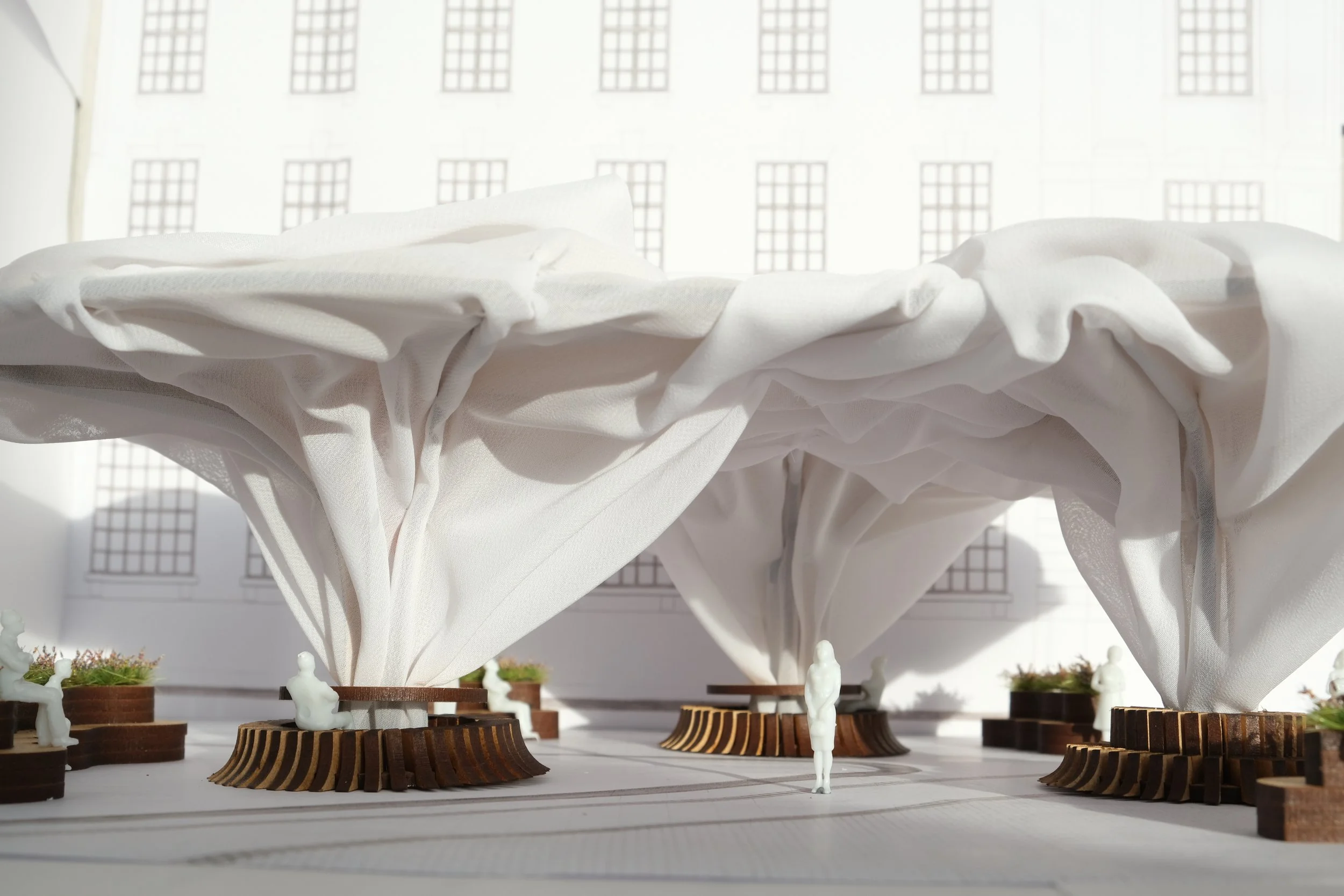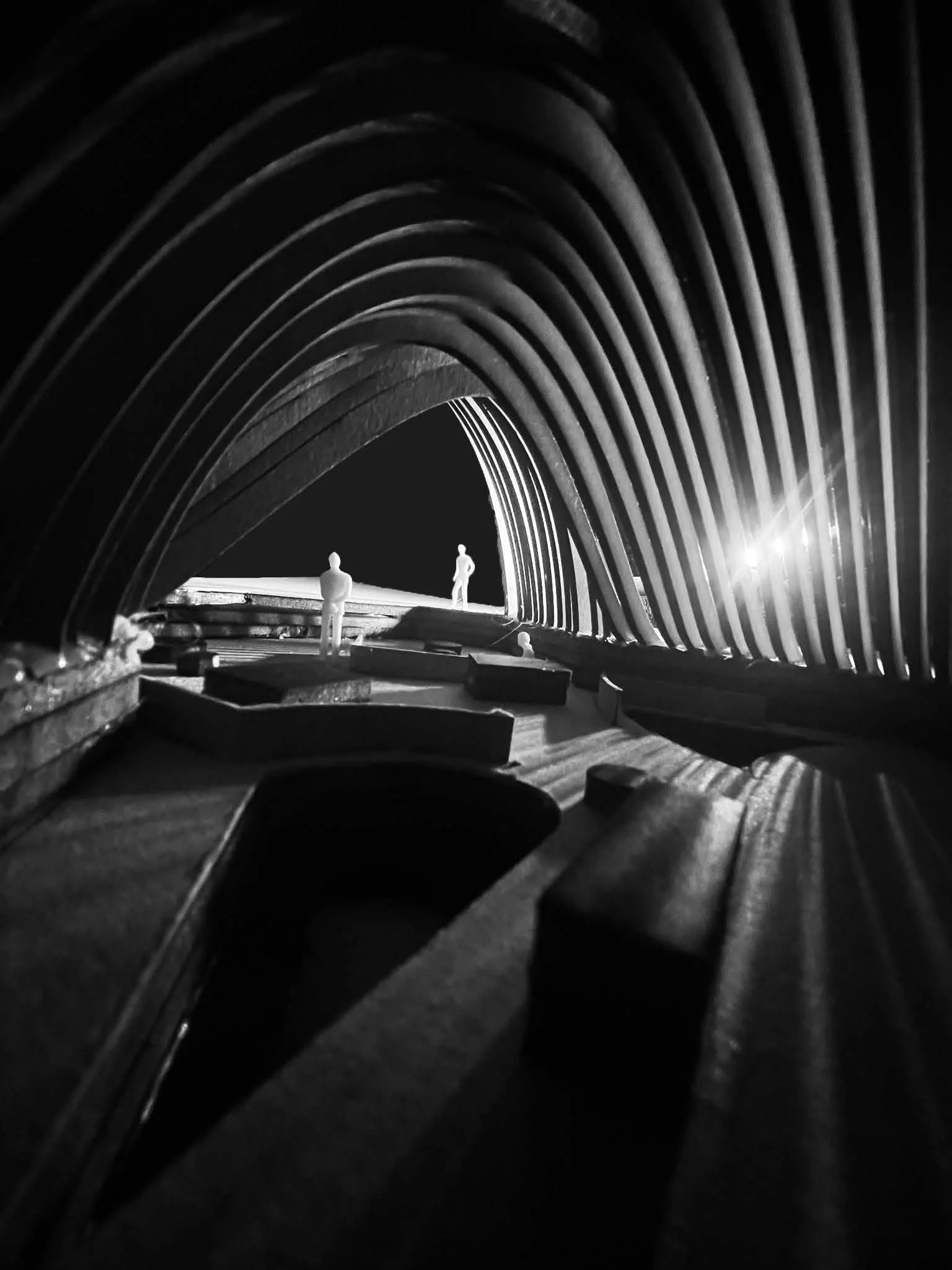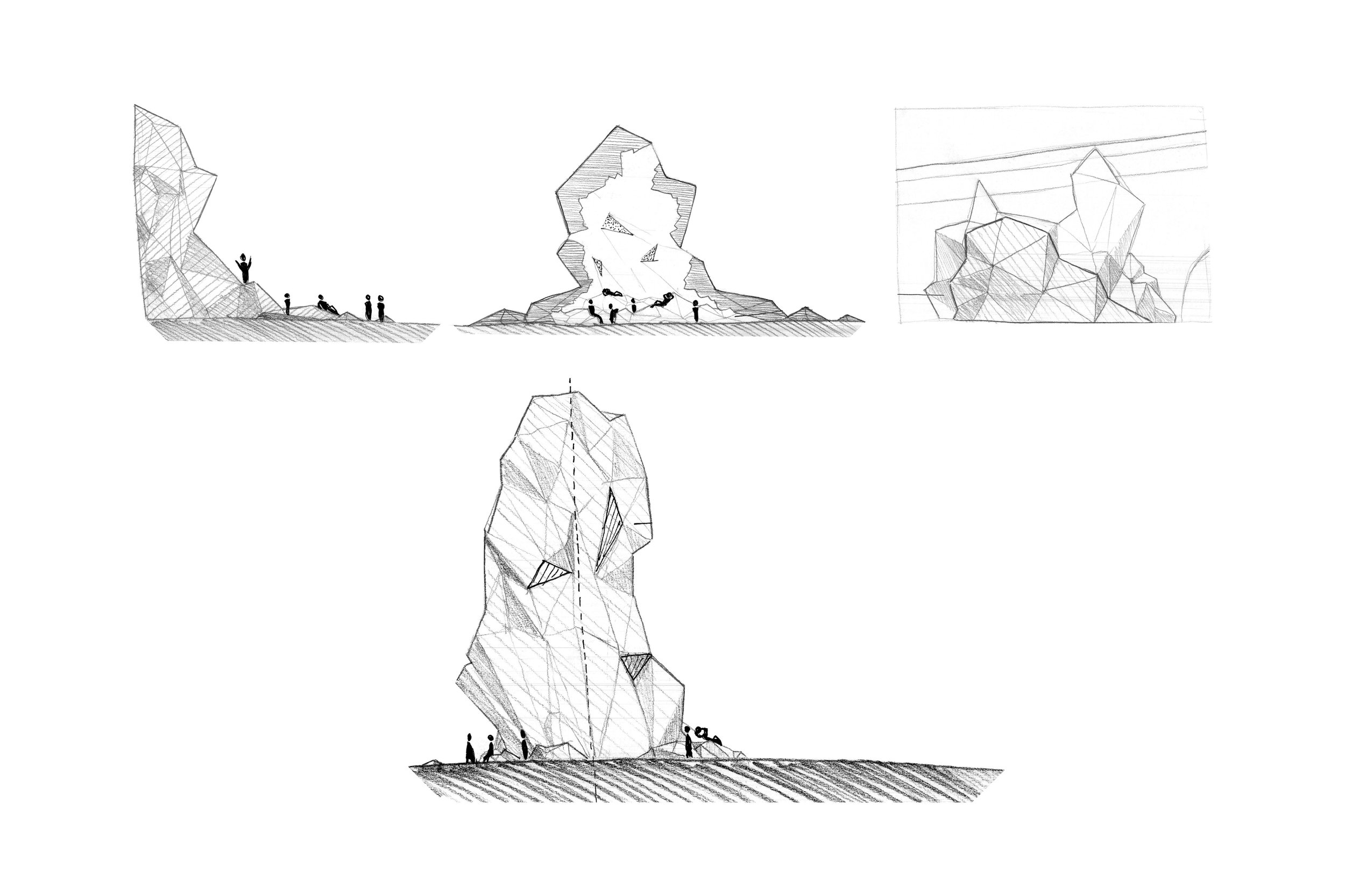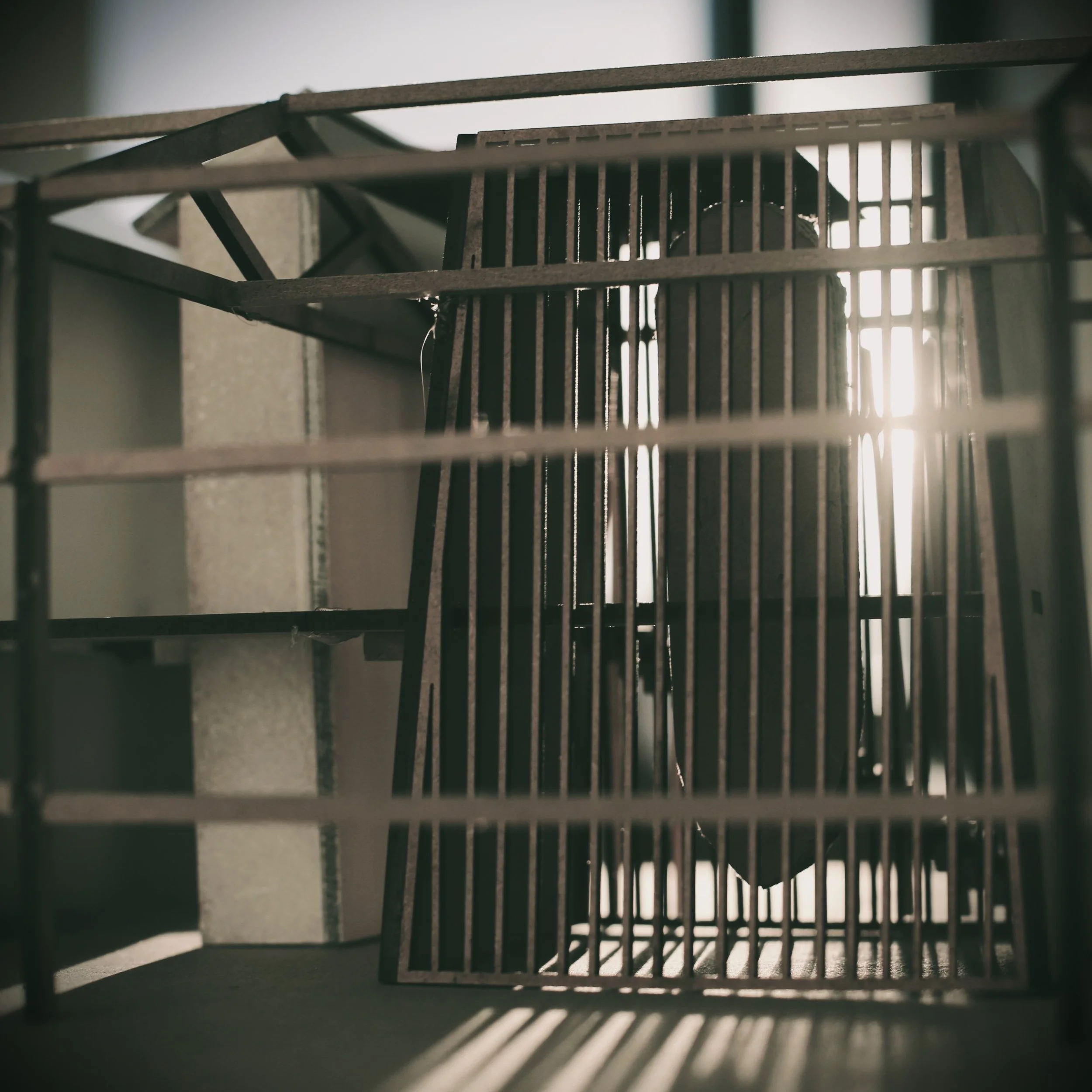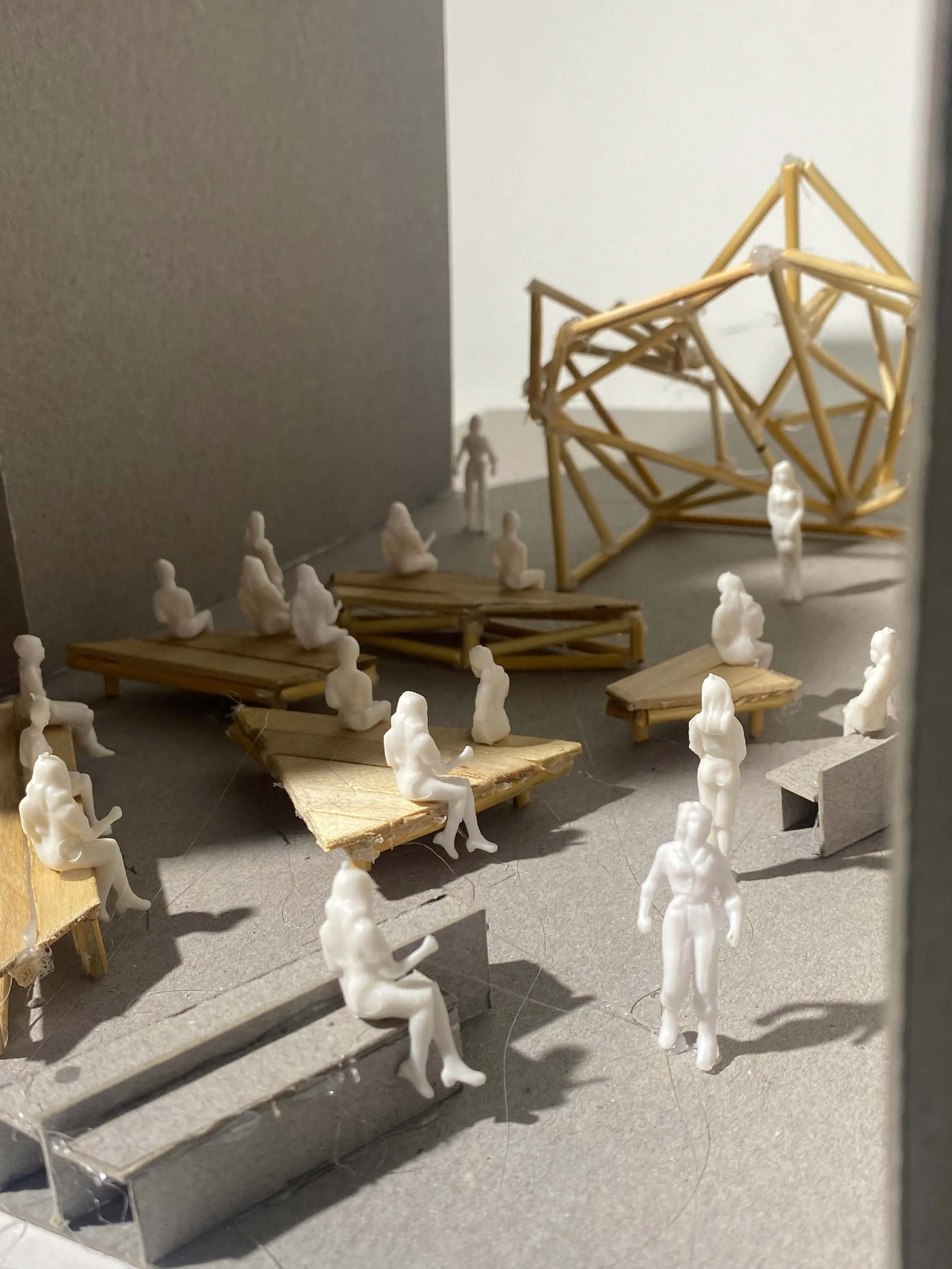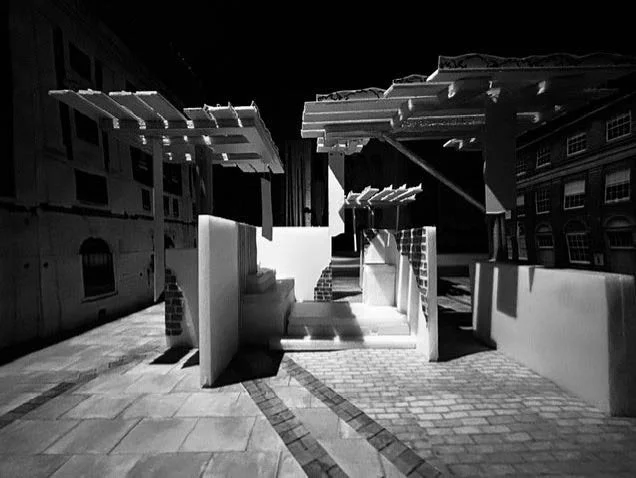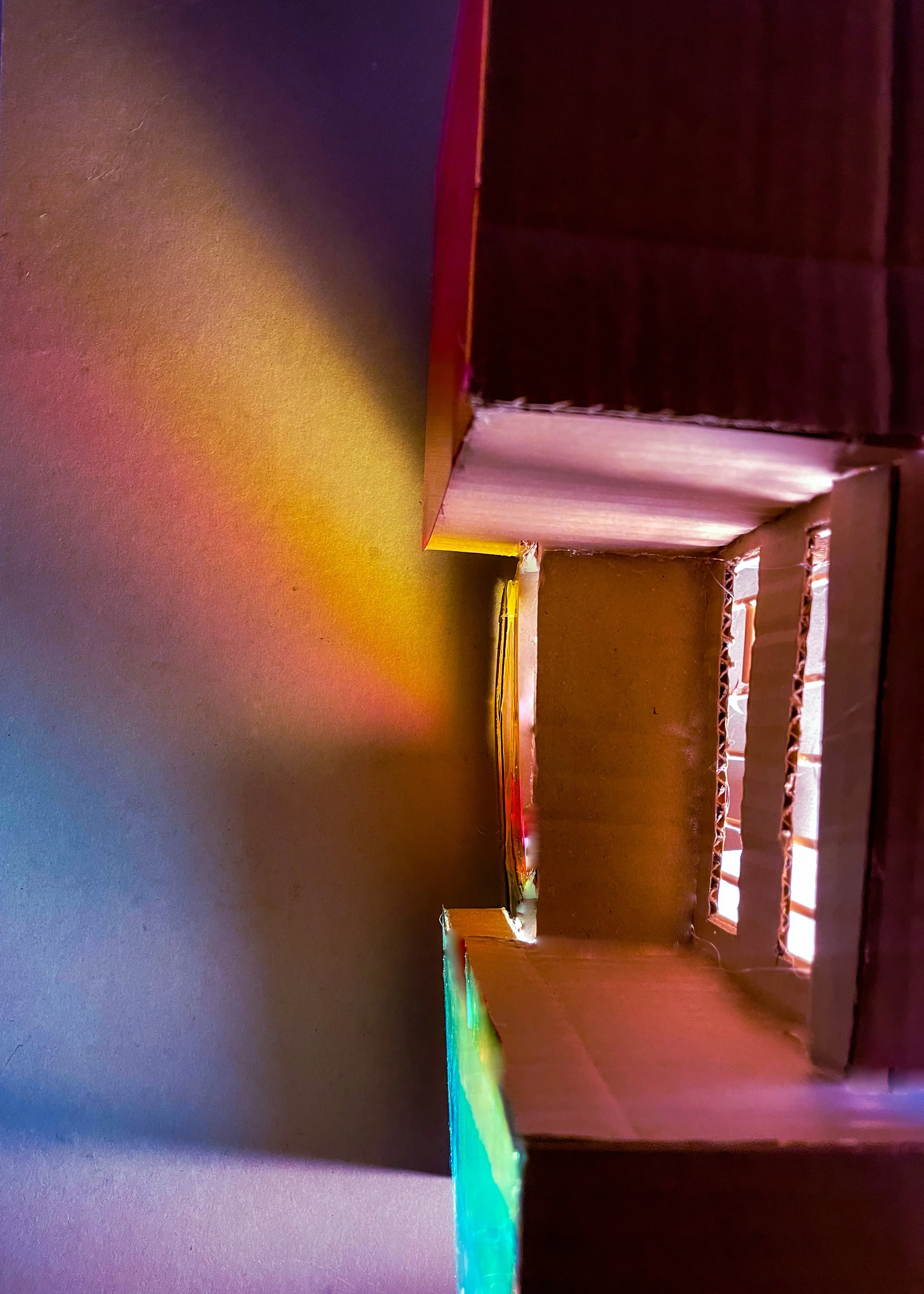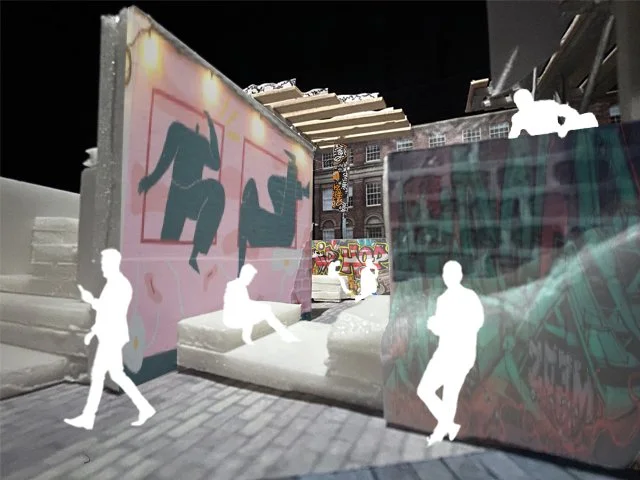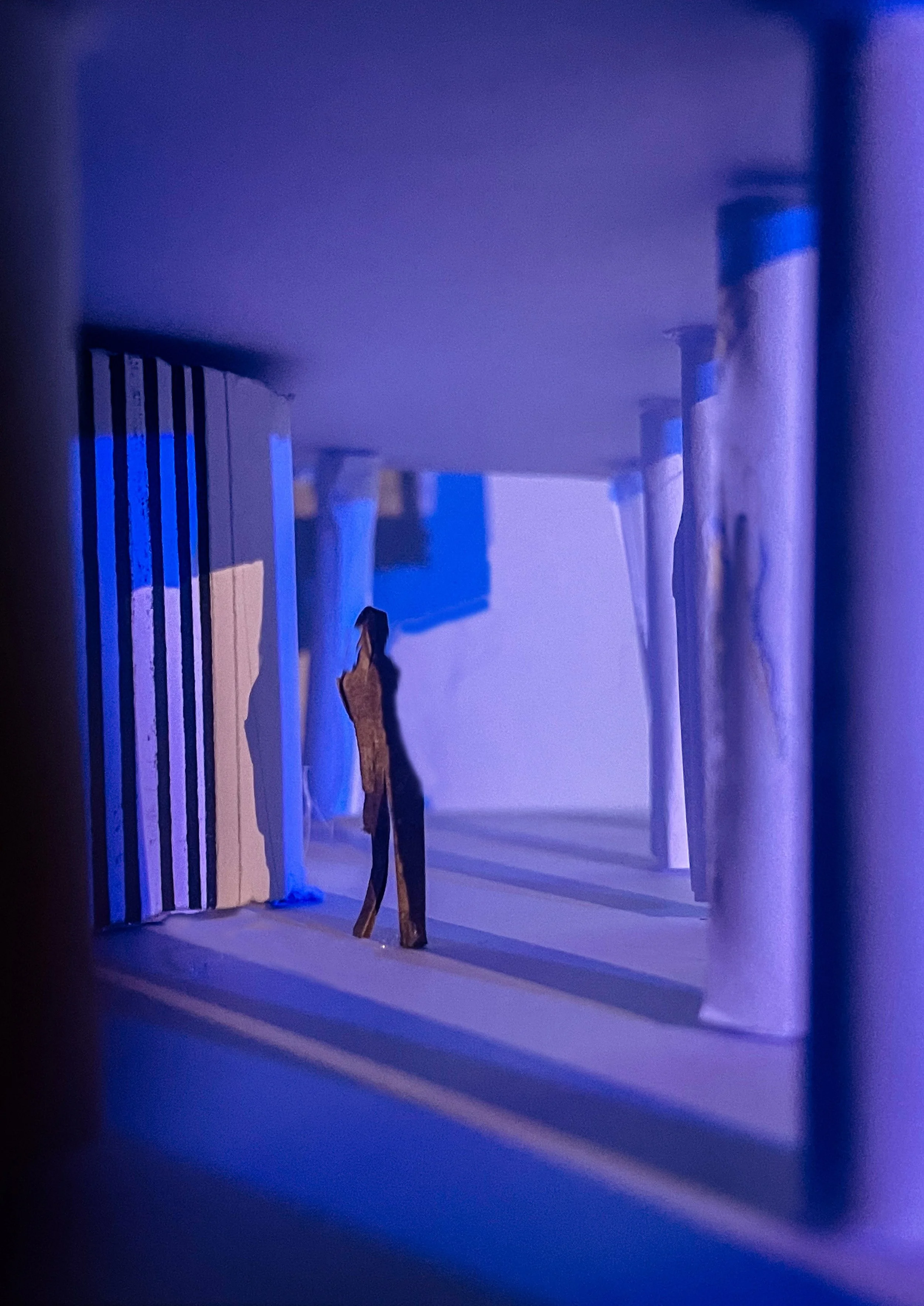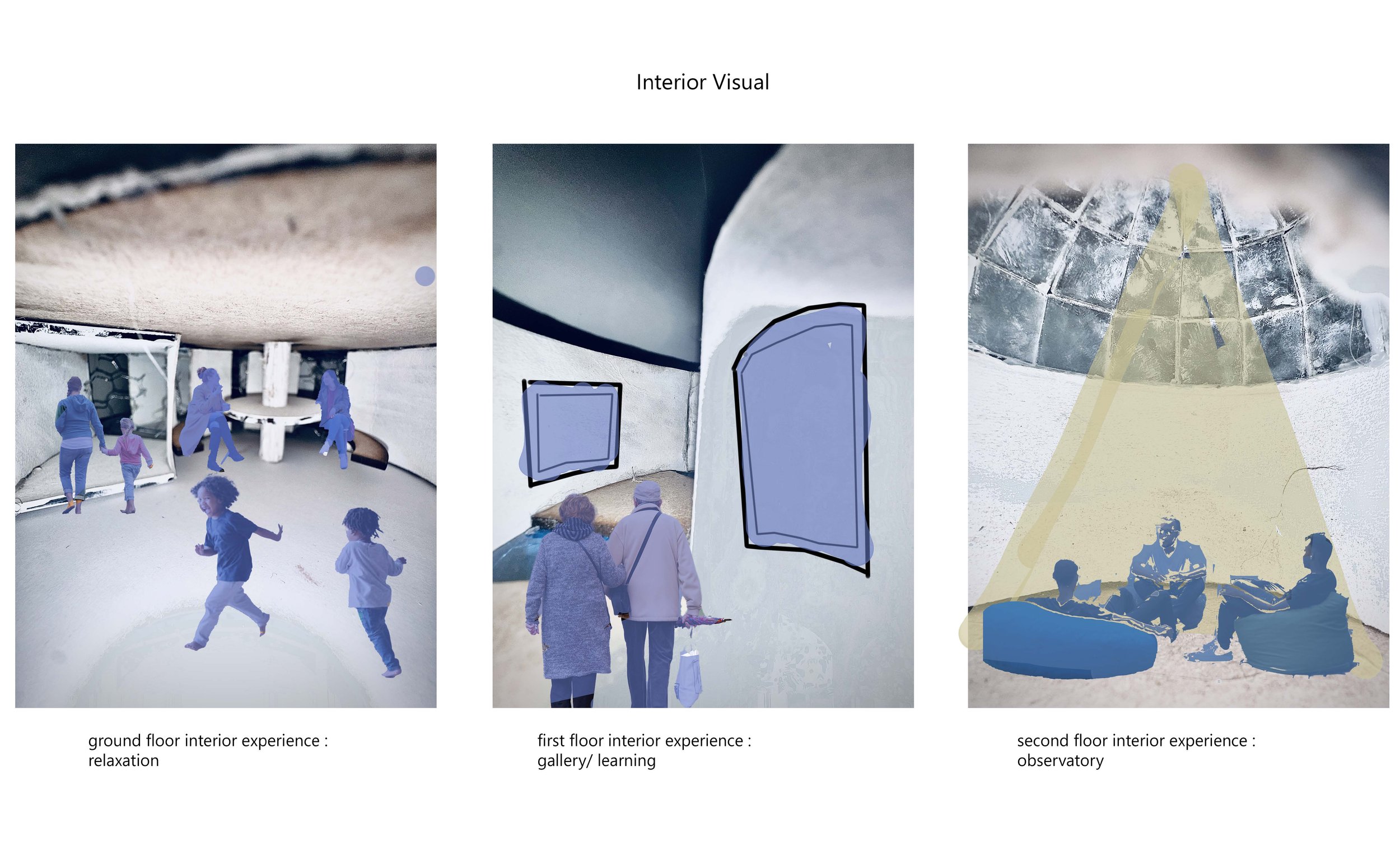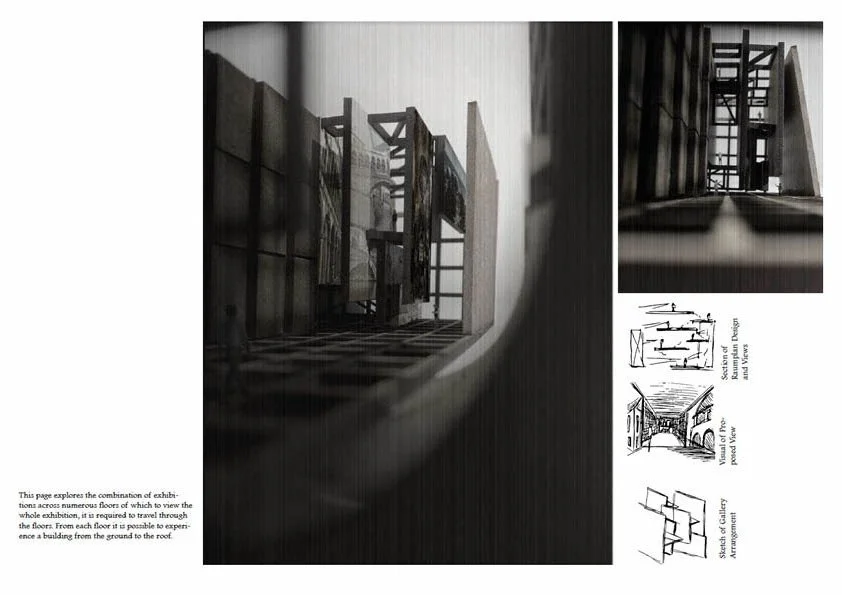
PART 1
2023
Part 1
YEAR 3
This year, students have been based in London, Stoke, and Venice. The act of design ‘process’ has been a core focus - from large scale sectional models of facade studies, to inventive comic strip explorations of space, or experimental image making techniques to investigate cinematic environments.
Students work across multi disciplines to help consider, challenge and represent design propositions.
STUDIO ONE: Abstract Machine
STUDIO ONE: Abstract Machine
The studio is concerned with production of architectural responses in which performative diagrams are lucidly embedded, deployed and extrapolated within spatial and material systems. The studio works by investigating the nature and interaction of a series of strata:
Context
How can the narratives of a particular site inform the evolution of a brief?
Can one extrapolate rule systems operating within the urban context, how could such systems be codified, applied tested or broken?
Programme
How does power manifest? The students are asked to propositionally develop a brief reflecting the reification of a particular power structure using a self-selected guild as a vehicle.
Space
Using the programme as a base and the constraints of a selected site, how can you spatialise a given narrative. The students begin this exploring spatial case studies extrapolating the given rule systems and hierarchies then test them against their selected guild programme on their site. Fluency in such organisation structures typically leaded the students to developing exotic hybridised monsters, perfectly adapted to their niche habitat
Enclosure
How can the structures of power mapped onto to spatial methodologies manifest as physical form? Can one represent ideas and values through an architectural language? The students are force to confront ‘meaning’ within their elected tectonic systems.
The students begin this exploration with one constraint, that the reification acknowledges and embodies a sustainable ethos. To this end the studio visited 15 Clerkenwell Close by Groupwork Architects London to discuss with the office the use of stone and mass timber in contemporary structures.
Staff
Keith Andrews
Students
Rabia Hashmi
Harvey Snowden
Oliver Rompa
Izmah Butt
Arooj Nawaz
Ahmed Farihah
Chantal Lovenskiold
Morgan Wymes-Arthur
Samuel Hughes
Thomas Callender
Deverndonald Kharlyngdoh
Celine Akin
Amrit Kaur
Omamakpo Ashaka



STUDIO TWO: All The Fun of the Fair
STUDIO TWO: All The Fun of the Fair
‘Theme parks represent extraordinary spatial and social forms, they offer some of the most basic needs, reflect deep and powerful emotions and cognitive modes, and present some of the most telling and controversial representations of the world.’
Scott Lukas, Theme Park
One of the original industrial cities, Stoke-on-Trent was founded on a backbone of manufacturing; with its North Staffordshire coalfield and pottery industries dating back to the Thirteenth and Seventeenth centuries, earning it the nickname ‘The Potteries’. Post-Industrialisation, post-Brexit and post COVID the city, like many across the North of England, is now facing a wave of social problems, economic and political problems; with the various regeneration efforts having had little effect.
One of Stoke-On-Trent’s most visited attractions today is that of Alton Towers theme park. Inspired by Disneyland and operating for over 40 years, Alton towers like other successful theme parks, offers three main things – Entertainment, Escapism and Education with the aim helping to boost morale, reinforcing national identity and offering comfort and reassurance in times of need. As Scott Lukas explains in his book, ‘Theme Park’ the theme park narrative is shaped by culture and the national identity, and eventually the theme park goes on to shape culture and the national identity.
Located on the site of Falcon Works, a derelict pottery factory just outside the city centre, the students were tasked with creating a theme park with the intention of ameliorating one of the social, economic, or political issues of Stoke of Trent. A range of parks were created: Lei-Vann’s Stokeletic park encouraging local people to get fit and into sport; to Will’s Landfull educating and encouraging locals to recycle; to Elsa’s Barbie’s Scream House acting to dispel body image standards; to Jordan’s Tradesphere Emporium helping unemployed locals to upskill; to Jake’s Stoke Transport Centre reconnecting the 6 towns of Stoke; and to Tyrone’s Ceramica safeguarding the history of the area from
Staff
Carma Masson
Students
Jordan Ion
Lei-Vann Mcgillivary-Allert
Elsa Whittaker
Adam Patel
Tyrone King
Jacob Rose
Suraj Borad
Zeniyal Gajera
William Airlie
Luana Silva Higgs
Melos Abdiu



STUDIO THREE: Studio Paradiso
STUDIO THREE: Studio Paradiso
Studio Paradiso draws inspiration from the cinematic changes in Cinema Paradiso (1988). We have explored the role of the cinema environment within a community, a place to gather, sitting amongst strangers, a place for exchange, to argue, and to escape the realities of everyday life.
In 1902, a sudden and unexpected collapse of St. Mark’s Tower in Venice resulted in a scene reminiscent of a quarry site or a city in the aftermath of a war, with piles of rubble scattered across the plaza. The photographic documentation captures this event, depicting the theatrical backdrop of St. Mark’s Square that still surrounds it today. The tower was subsequently reconstructed exactly as it was, thanks to a collective endeavour by the city’s residents. This incident raises the intriguing question: What transpires when architectural structures steeped in collective memory are destroyed?
Our exploration into the future of the cinema as an essential institution within our cities has mediated between the imagined and the real, exploring the junction between film and architecture and image making. Central to this inquiry is the notion of the ‘ruin’, not as a discarded entity, but as a modern relic that pays homage to the past while allowing new interventions to sensitively integrate.
Curated in front of you are a series of projects that are grounded in the ongoing current discourse surrounding the future of cinema, reflecting a deep engagement with Venice’s rich cultural heritage. In a challenging environment marked by concerns such as the integration of AI, labour strikes, the operational expenses of cinemas, pirate content distribution, and the rise of online streaming, the trajectory of cinema’s future is navigating a turbulent period.
From Callum’s Scarpa inspired immersive water projection arts centre that sensitively morphs out of the ruin, to Cieran’s inventive photogrammetry cataloguing of Venice’s historic architectural elements that conceives what happens when Venice eventually floods and is gone forever - a proposal that redefines Venice as a floating archive. Nirjarkumar has reassessed the method of film recording in Venice by creating a series of every changing stage sets that use Venice as a backdrop.
All projects are set in the dramatic city of Venice, Italy - a city steeped in historical invention. The World’s first moving film clip with a stationary camera was filmed on a gondola in 1896 (Panorama du Grand Canal vu d’un bateau). In 1932 it also became the setting for the World’s first film festival - a place to gather, critique and showcase original film from both established and new talents. The city is full of spectacle and drama, layered within dense streets acting as a backdrop of the everyday stage. Experimental processes such as pinhole cameras, projection mapping, moving image cyanotypes, and so on have been explored that respond to the history of photographic image making. The aim is to reappropriate conventions of architectural representation in communicating architectural spatial environments
The studio is defined by its hybrid processes, mediating between analogue and digital techniques to capture, document and interpret the design process from early fieldworks to the iterative methods of resolving a design.
Staff
Ashley Caruso
Students
Nikunj Antala
Alistair Clarkson
Cieran Clarkson
Callum Fawcett
James Fowler
Jasmine Osborn
Nirjarkumar Patel
Korin Smith
Harrison Talbot
Kyle Walker
YEAR TWO STUDIO
YEAR TWO STUDIO

















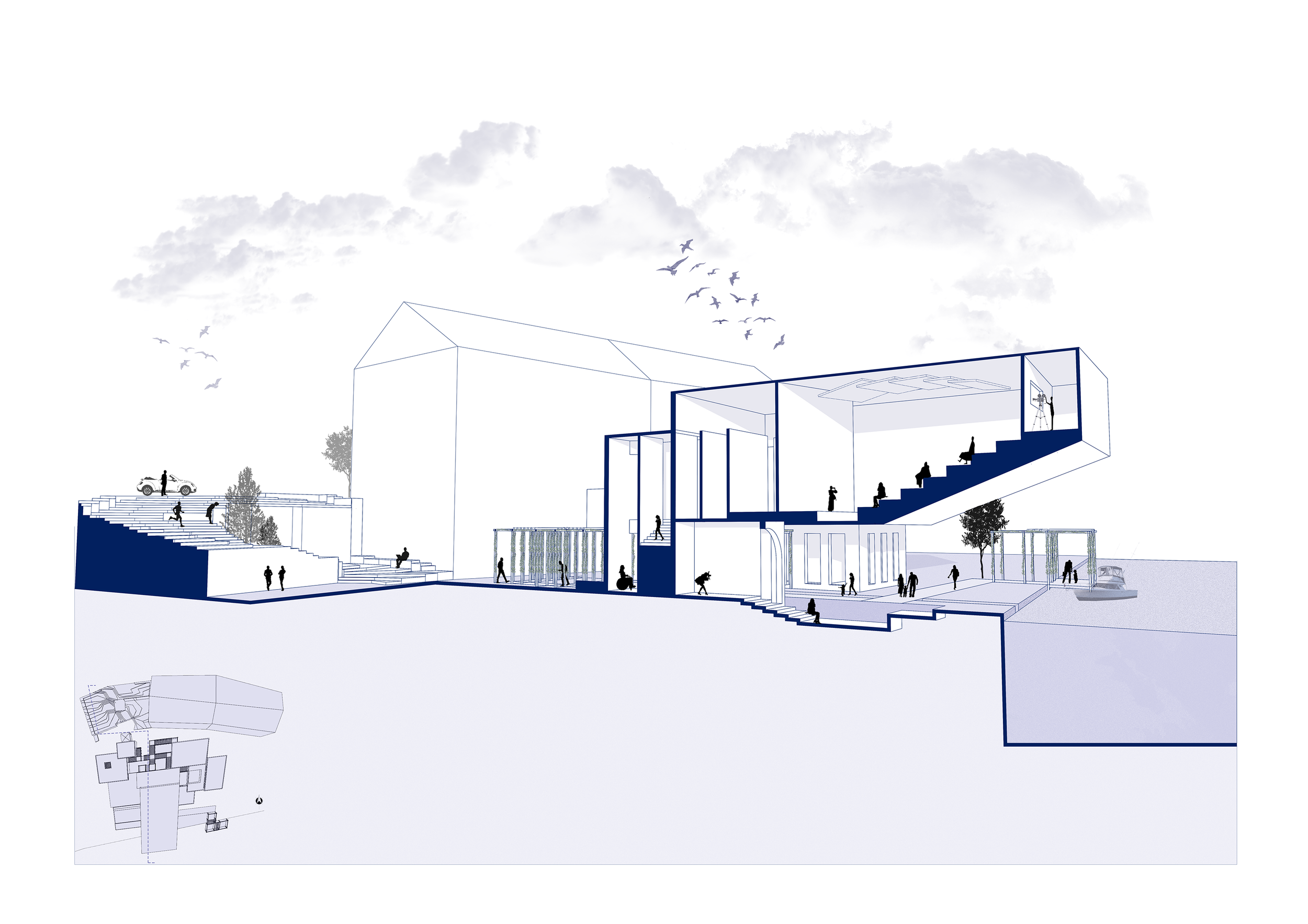


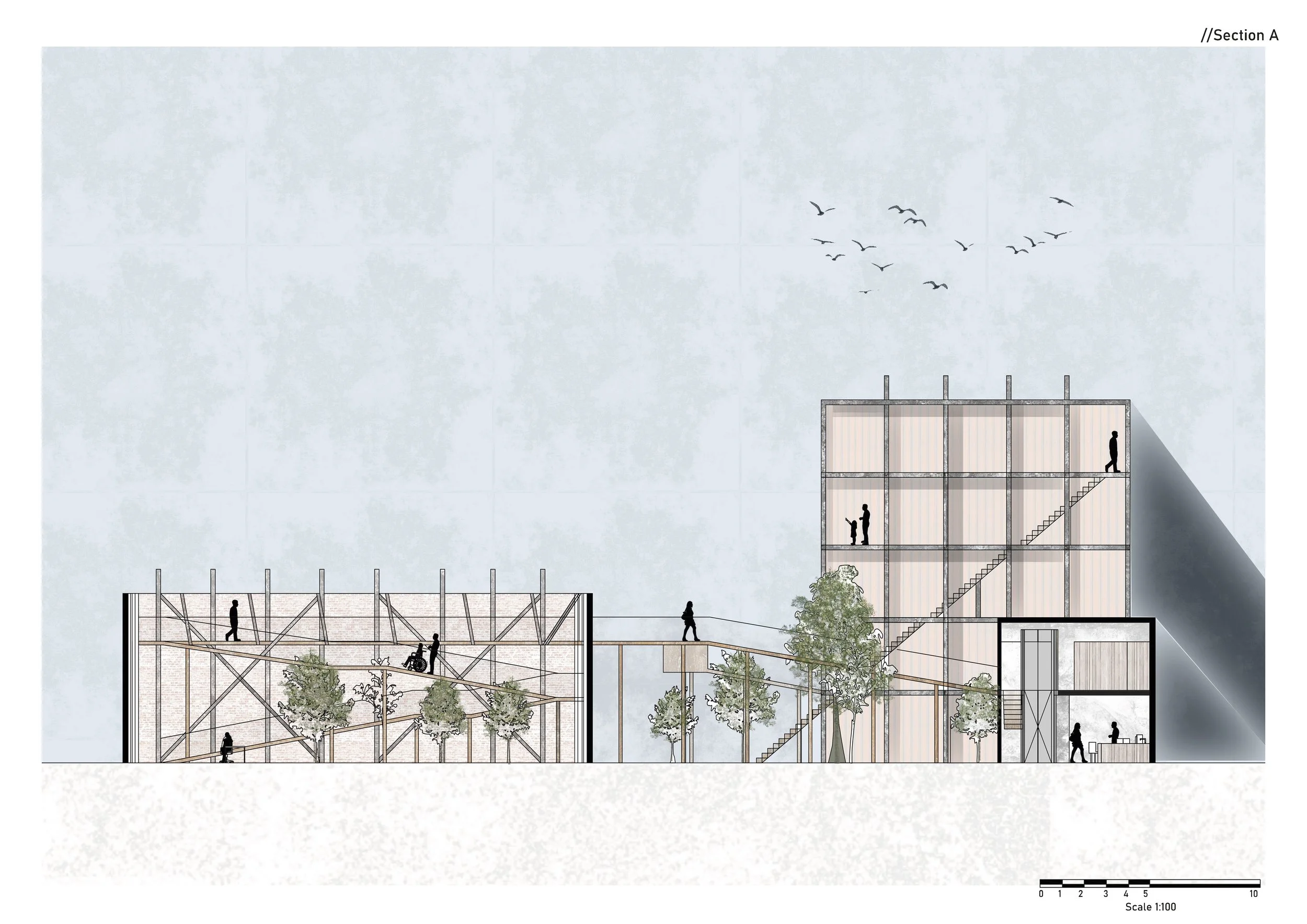

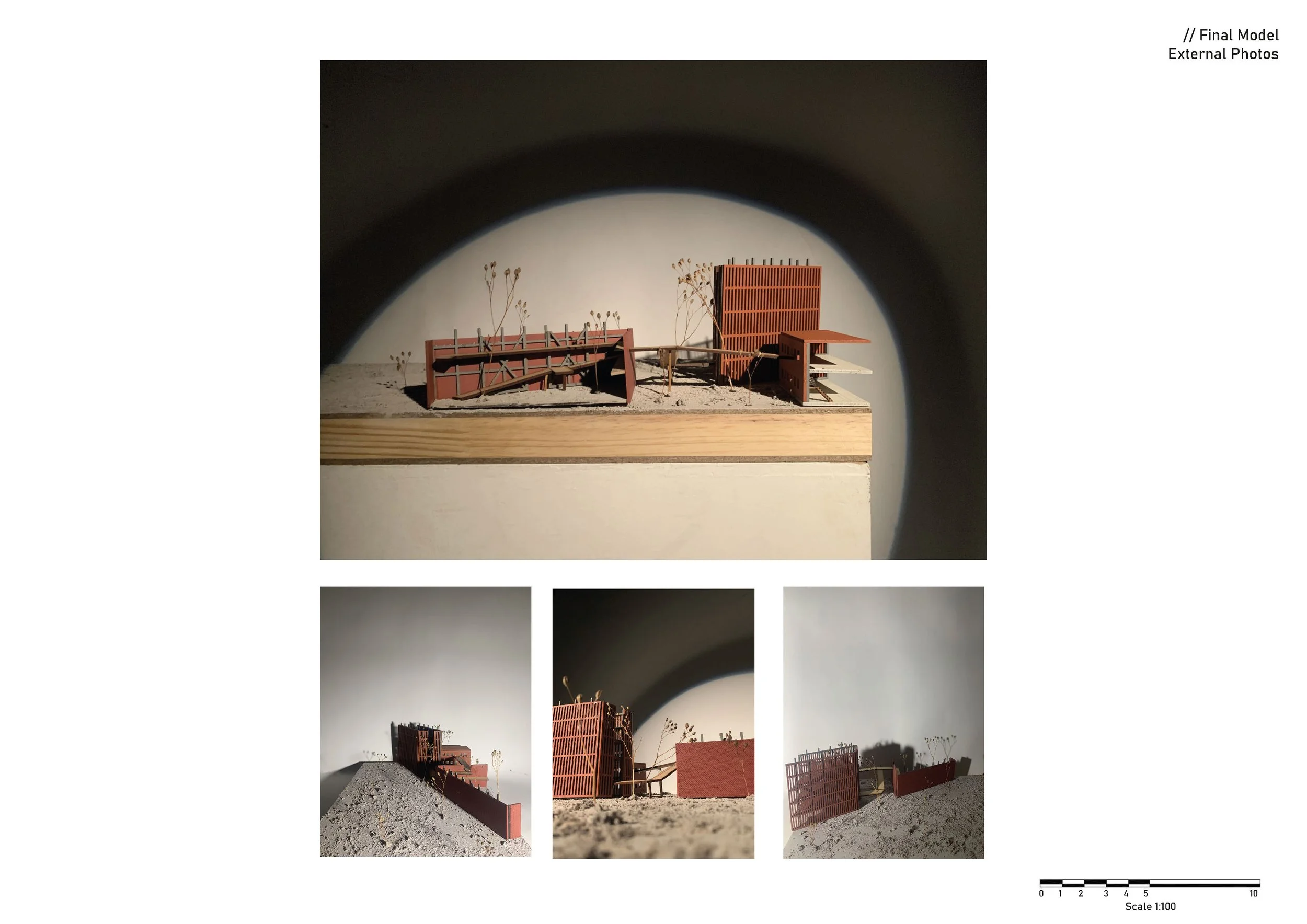



YEAR ONE: Public Space Practices
YEAR ONE: Public Space Practices
Semester one starts with an investigation of the possibilities of the architecture of the everyday through the study and discovery of the material and spatial qualities of abandoned everyday objects. Students are asked to explore a range of methods, including drawing and model making, as tools for recording, developing and articulating architectural spaces.
Through a series of design exercises and a critical evaluation of current public space practices, the second half of semester one introduces students to the study of an urban context and to the design process as a creative and experimental approach to architectural design. Using drawing, photography, collage and scale models, students are asked to design a small-scale experiential space, intended as a design experiment in the public realm. An urban folly, a pavilion, an event space, a rest area, a break space, a playscape, a structure with no discernible purpose, an imaginative, experimental, experiential space or a transient architectural structure, this architectural intervention explores the intersection between architecture and sculpture, between aesthetic autonomy and cultural/social/political/environmental agendas, responding to contextual information and human scale requirements.
With a strong emphasis on research, contextual engagement and design speculation, semester two focuses on the opportunities offered by public programmes that respond to the physical, as well as social, cultural or environmental conditions of an urban context. Through the design of a small-scale public space intervention, students learn to critically develop their spatial and communication skills to a professional standard, while also working with scale models as thinking and propositional tools to explore architectural form, the inhabitation of space, material approaches and contextual engagement in architectural design. This project aims to enhance the urban landscape of Leeds city centre by responding to specific aspects, events, and issues in the public space, which have been observed by students and have inspired them.
Staff
Anna Pepe , Alex Tzortzis De Paz, Alastair J Shelley, Claire
Hannibal, James Harrington, Zaid Alawamleh
Students
Shamima Akhtar
Khaled Al-zubaidy
Stephanie Nnediuto Anyanechi
Omer Baboosh
Sophie Banks
Hind Baqer
Corey Beaumont
Bailey Blakeway
Mckenzie Cartwright
Emma Chapman
Jack Denton
Victor Duarte De Almeida
Clare Dunford
Tashinga Dzere
Andrea Everington
Poppy Fallon
George Gooderham
Katie Green
Leo Handy
Yung Wen Ho
Evelyn Holroyd-Smith
Morgan Hughes
Murtaza Hussain
Mikita Istomin
Bailey Jackson
Rabiah Jamil
Alicia Kan Wah
Sienna Kemp-Adair
Owais Khan
Sonia Khan
Sharan Khana
Tyler Lang
Tafadzwa Mapiye
Zeira Mathews
Jacob McGowan
Ben McLelland
Lauren Menary
Muhammad Imaad Miah
Keusan Mushengezi
Filip Nevyjel
Megan Noble
Mkhzoum Othman
Maiya Panesar
Rupert Pickard
Marta Poikane
Bianca Radu
Jefersson Reyes
Edgar Rodrigues Gomes Correia
William Rushton
Campbell Saunders
Jacob Scott
Olivia Sherratt
Edward Simpson
Finley Smith
Holly Smith
Florentina Stoica
Cemahl Tamumo-Mullin
Owen Taylor
Phoebe Webster
Freya Whiteley



